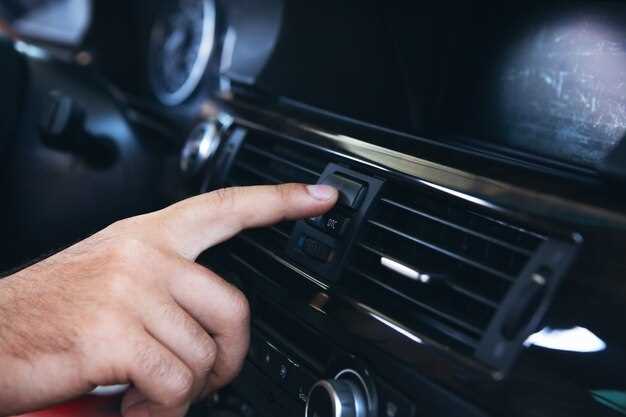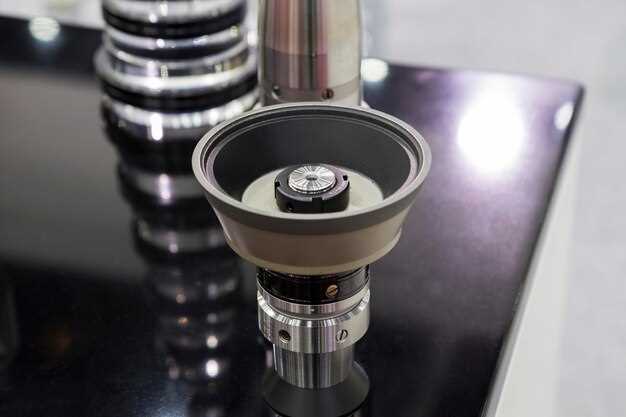
In the world of automotive enthusiasts, the sound of an engine is not just a byproduct of performance; it’s an integral part of the experience. However, achieving the perfect exhaust sound can be a fine line to walk, especially when navigating the various regulations and laws concerning vehicle noise levels. Each region has its own set of guidelines that dictate what is acceptable, often putting limitations on the modifications you can make to your vehicle’s exhaust system.
Understanding these regulations is crucial for any car owner looking to tune their exhaust sound. While the desire for a throaty roar or a deep, rumbling bass is common among car enthusiasts, it’s essential to stay within legal parameters to avoid fines and to ensure your vehicle remains roadworthy. Many enthusiasts often overlook the fact that exceeding legal noise limits can lead to significant consequences, including potential legal actions and restrictions on the use of their vehicles.
Fortunately, tuning your exhaust sound doesn’t have to be at odds with the law. By focusing on various aftermarket components and techniques that comply with noise regulations, you can enhance your vehicle’s sound profile without facing penalties. This article will guide you through the best ways to achieve an optimal exhaust sound while staying within the boundaries set by law, ensuring you can enjoy the harmony of your machine without the worry of legal repercussions.
Understanding Local Noise Regulations for Vehicles
When considering modifications to your vehicle’s exhaust system, it is crucial to understand the local noise regulations that govern allowable sound levels. Municipalities often establish specific guidelines to ensure that noise from vehicles does not disrupt the community’s peace. These regulations can vary significantly from one area to another, requiring vehicle owners to familiarize themselves with the specific rules in their jurisdiction.
Noise regulations typically set maximum allowable sound levels, measured in decibels (dB), for vehicles operating under various conditions. These measurements can differ between residential and commercial areas, as well as between day and night operations. Understanding the tone of your exhaust system is equally important, as some tones can be perceived as more intrusive than others, even at the same decibel level.
Additional factors can influence noise regulations, such as the type of vehicle, the environment around the vehicle, and the presence of noise-sensitive areas, like schools or hospitals. Maintaining compliance with these regulations not only prevents potential fines but also contributes to a positive relationship between vehicle enthusiasts and the local community.
As you tune your exhaust sound, consider performing sound level tests with a decibel meter to ensure your modifications remain within legal limits. This proactive approach allows you to enjoy a customized exhaust tone while respecting local noise ordinances. Always stay informed about any changes in regulations to avoid unintentional violations that could lead to penalties or the need for costly rework on your vehicle.
Evaluating Different Exhaust Systems and Their Sounds
When considering an exhaust system, the noise and tone produced are critical factors that can influence your vehicle’s overall performance and character. Different types of exhaust systems can dramatically alter the sound profile of your vehicle, making it essential to understand the distinctions between them.
Aftermarket exhaust systems, including cat-back, turbo-back, and slip-on options, often enhance performance while significantly changing the exhaust note. Cat-back systems generally provide a deeper tone compared to stock systems, which can enhance your driving experience without exceeding legal noise limits. Turbo-back systems tend to create a more aggressive sound, suitable for performance enthusiasts seeking a loud, robust exhaust note.
The material used in the exhaust system also plays a pivotal role in the noise produced. Stainless steel systems are known for their durability and can create a more refined sound due to their resistance to rust and degradation. Conversely, aluminum systems may produce a sharper tone but often compromise longevity.
In addition to materials, muffler design significantly affects sound quality. Straight-through mufflers are designed for minimal restriction, providing a louder, more pronounced exhaust note. In contrast, chambered mufflers can reduce noise levels while still offering an appealing tone. Choosing the right muffler can help you achieve the desired sound while remaining compliant with noise regulations.
Ultimately, evaluating different exhaust systems involves balancing noise, tone, and personal preference with local legal limits. Listening to sound clips, seeking professional advice, and even attending vehicle meets can help you make an informed decision about the best exhaust system for your needs, ensuring that you enjoy the optimal auditory experience without breaking the law.
Ways to Modify Exhaust Tone Without Exceeding Noise Limits

Achieving the perfect exhaust tone while remaining within legal noise limits is crucial for many car enthusiasts. Here are several effective methods to modify your exhaust sound legally:
-
Resonator Removal:
Removing or replacing the resonator can significantly enhance the exhaust tone. This part helps to fine-tune frequencies, and its elimination may produce a deeper sound without drastically increasing noise levels.
-
High-Performance Mufflers:
Investing in a high-performance muffler can optimize exhaust flow and alter tone. Look for designs that focus on enhancing sound quality while keeping decibel levels within legal limits.
-
Pipe Diameter Adjustment:
Adjusting the diameter of the exhaust pipes can change the tone. Larger pipes increase volume, but if you maintain appropriate sizing, you can potentially enhance the sound without exceeding regulations.
-
Exhaust Tips:
Choosing different exhaust tips can impact the tone. Stainless steel or angle-cut tips can provide a sharper sound while keeping the noise within permissible levels.
-
Sound Dampers:
Installing adjustable sound dampers allows you to customize the exhaust tone. You can change the sound depending on the situation, maintaining compliance with noise restrictions.
-
Tuning Software:
Using tuning software or a chip can optimize the engine’s performance and exhaust sound. Custom tuning can help achieve a desired tone while ensuring that the vehicle remains quiet enough to meet legal standards.
Experiment with these modifications strategically to develop an ideal exhaust tone without surpassing legal noise limits. Always confirm local regulations to ensure compliance after making adjustments.
Measuring Exhaust Noise Levels Accurately and Legally
Accurately measuring exhaust noise levels is essential for ensuring compliance with local regulations while enhancing the performance of your vehicle. To achieve this without stepping outside the legal bounds, it’s important to know how to perform effective noise level assessments.
To begin with, use a calibrated sound level meter capable of capturing the full range of sound frequencies. This device should meet or exceed the regulation standards set by local authorities. The measurement process typically involves placing the meter at a specified distance from the exhaust outlet, ensuring that it is positioned at a height that reflects the level of sound experienced by nearby residents and other road users.
During the testing procedure, rev the engine to various RPMs while observing the tone and intensity of the exhaust noise. It’s important to note the legal limits imposed by your locality, as these can vary widely. The ideal tone not only contributes to a more enjoyable driving experience but also meets the regulatory sound thresholds.
After recording the noise levels, compare your results with the legal limits to assess compliance. If your vehicle exceeds acceptable noise limits, consider making adjustments to the exhaust system, such as installing mufflers designed to refine the sound while maintaining engine performance.
In summary, accurate measurement of exhaust noise levels involves using the right tools, adhering to local regulations, and fine-tuning your vehicle’s exhaust system to achieve an enjoyable driving tone within legal noise constraints. This approach not only ensures you stay within the law but also contributes to a more harmonious relationship with your surroundings.
Common Mistakes in Exhaust Tuning: What to Avoid

Exhaust tuning can significantly enhance your vehicle’s performance and sound. However, many enthusiasts make critical mistakes that can lead to undesirable outcomes. Here are common errors to avoid when tuning your exhaust.
- Ignoring Local Regulations:
Before making modifications, it’s essential to research and understand local noise regulations. Many areas have strict limits on acceptable sound levels. Ignoring these can lead to fines and legal issues.
- Choosing the Wrong Muffler:
The muffler plays a vital role in shaping the exhaust tone. Selecting a muffler that doesn’t match your vehicle’s specifications can create excessive noise or an unpleasant tone. Always choose one compatible with your engine type and size.
- Overestimating the Benefits of Aftermarket Parts:
While aftermarket exhaust components can enhance performance, they may also increase noise levels dramatically. Opt for products designed to improve both sound and performance without breaching noise regulations.
- Neglecting Resonance Issues:
Some exhaust systems can produce unwanted resonance or droning at certain RPMs. Testing the setup thoroughly before finalizing it can help identify and mitigate these issues.
- Failing to Consider Vehicle Type:
Different vehicles will produce varying tones and noise levels based on their design. It’s crucial to assess how changes will impact your specific model rather than applying a one-size-fits-all approach.
- Not Tuning for Ideal Sound Quality:
Tuning exhaust sound is not solely about volume. Aim for a rich, pleasant tone that adds to the driving experience rather than just noise. Utilize sound testing to find the perfect pitch.
Avoiding these common mistakes in exhaust tuning will help you achieve the desired performance and sound while adhering to legal limits. Always prioritize a balance between noise level, tone quality, and regulatory compliance.
Best Practices for Maintaining Compliance After Modifications
When modifying your vehicle’s exhaust system, it’s crucial to ensure compliance with local regulations regarding noise levels and exhaust tone. Here are some best practices to help you achieve this balance:
| Practice | Description |
|---|---|
| Research Local Regulations | Familiarize yourself with the specific noise regulations in your area, including dB limits and acceptable exhaust tones. |
| Choose Quality Components | Select exhaust parts designed for compliance, which often include features that help minimize noise while enhancing performance. |
| Utilize Mufflers and Resonators | Incorporate appropriate mufflers and resonators to control sound output and adjust the overall tone according to legal requirements. |
| Regular Sound Testing | Periodically test your vehicle’s sound levels to ensure they remain within legal limits, especially after modifications are made. |
| Stay Informed | Keep up with any changes in exhaust noise regulations or standards in your region, as they can evolve over time. |
| Consult Professionals | Seek advice from experienced automotive professionals who can provide insights on compliance and the best practices for modifications. |
By following these best practices, you can enjoy the enhanced performance and sound of your modified exhaust system while staying within the legal noise limits.
